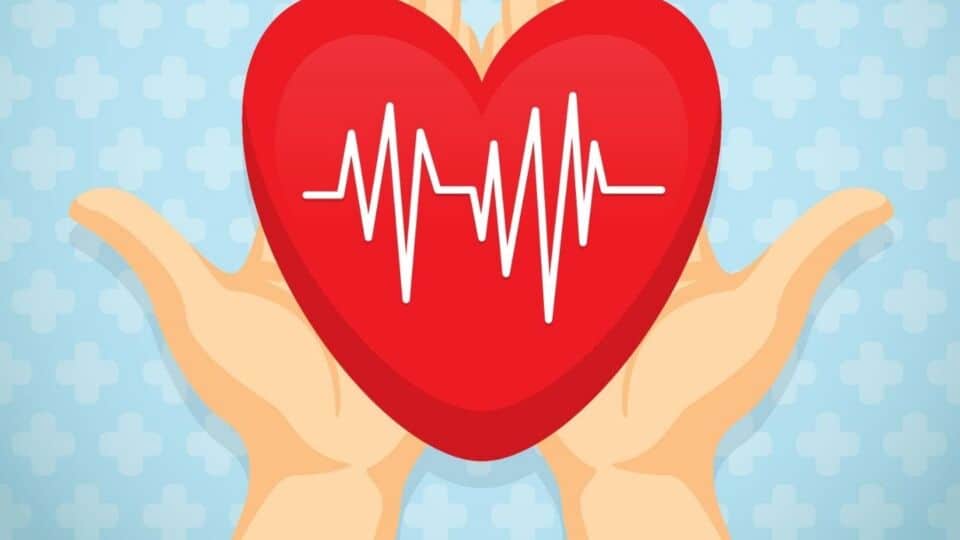How Aerobic Exercises Can Help With Your Heart Health

Have you tried walking up a flight of stairs and find yourself panting for breath at the end of it? That’s a sign of your body in need of oxygen. Aerobic means “with oxygen”, and therefore your aerobic fitness or cardiorespiratory endurance level will depend on how well your body is able to put oxygen taken in to use.
How can aerobic exercises help you to improve your heart health? Mr Lim Hun Teck, Principal Physiotherapist, Raffles Rehabilitation Centre, shares these with us, as well as fun cardio exercises that you can do with a buddy.
How Can Aerobic Exercises Help My Heart?
Regular and consistent aerobic activity improves your cardiorespiratory endurance. In other words, your heart, blood vessels, and lungs benefit from working harder than normal. Exercise improves your cardiorespiratory function by increasing the activity of these organ systems above what they experience at rest. Over time, your body adapts to these stresses and your fitness improves.
Cardiorespiratory endurance is an important aspect of health and it includes the following reasons:
- Having a better cardiorespiratory fitness typically leads to higher levels of routine physical activity as you go about your day-to-day life.
- This in turn provides additional health benefits.
- Low levels of cardiorespiratory fitness are associated with higher risk of premature death from all causes, and specifically from cardiovascular diseases. Therefore, looking at this from a more positive perspective, increases in cardiorespiratory fitness are associated with a decreased risk of death from all causes.
- Aerobic fitness is an important foundation that will allow you to engage in daily activities with greater ease.
- Increases in cardiorespiratory endurance allow you to more fully participate in recreational and sport activities.
- Aerobic activities that promote cardiorespiratory endurance also burn a relatively large number of calories and thus help to maintain appropriate body weight.
Components in an Aerobic Workout
For safety and enjoyment, follow a consistent pattern in your aerobic workout. It should include three phases – warm-up, endurance conditioning, which is the main part of the workout, and cool-down.
Warm-up
The intention of this phase is to warm up the muscles. It should consist of five to ten minutes of low-to-moderate level activities with a lighter version of what you will be doing in the conditioning phase.For example, if you are running, then jogging would be appropriate to include in the warm-up. The point is to gradually bring up the intensity from resting levels to the intensity that you plan to do in the conditioning phase.
Warm-up activities prepare your heart, lungs, and muscles for the conditioning phase of your aerobic workout. Remember, the more intense the conditioning phase is, the longer the warm-up should be.
Endurance Conditioning Phase
This is the main part of your aerobic workout. The activity that you have selected to do should be guided by the FITT principle, which stands for frequency, intensity, time and type.
Frequency: refers to the number of days per week in which you set aside time for exercise.
Intensity: reflects on how hard you are working out activity.
Time: refers to the duration you are actively working out, either on a daily or weekly basis.
Type: refers to activities that involve large muscle groups to improve cardiorespiratory fitness.
Cool Down
The purpose of a cool-down is to provide an opportunity for the body system to gradually return to pre-exercise levels. Your heart slows down, blood pressure decreases and the muscles recovering from the conditioning phase. It should consist of a minimum of five to ten minutes of low-to-moderate activity.
Proper cool-down is important as this is also for safety reason where a drop in blood pressure can lead to fainting, avoid negative changes in heart rhythm. This will also help your body temperature to decrease gradually. The higher the intensity of your conditioning phase, the longer your cool-down should be.
Calculating Your Maximum Heart Rate
Your heart rate is a good indicator of how hard you are working as we want to get the most out from our workout. To know if you have reached your optimum heart rate during the conditioning phase of your workout, this is how you calculate in three easy steps.
| Step 1 | Resting Heart Rate (RHR) Measure your resting heart rate. The best time to do it is when you first wake up. You can do it while lying in bed for one minute. For a more accurate reading, do so over the next 3 mornings and average it out. BPM = Beats per minute Example: Reading 1 + Reading 2 + Reading 3 (62 + 58 + 60)/3 = 60 bpm |
|---|---|
| Step 2 | Maximum Heart Rate (MHR) This is simply derived by subtracting your age from 220. Example: Age is 30 220 - 30 = 190 bmp |
| Step 3 | Target Heart Rate You would want to ensure that your heart rate is between 60% and 85%. This is the formula Target Heart Rate = [(MHR - RHR) x %Intensity] + RHR For a 30 year old 60% of THR is: [(190-60) x 0.60] + 60 = 138 bpm 85% of THR is [(190 - 60) x 0.85] + 60 = 170.5 bpm |
The target heart rate for a 30-year-old is between 138 bpm and 170.5 bpm.



